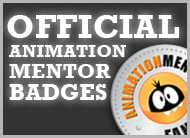This is a great question! As with any question regarding workflow, there's no "etched-in-stone" answer, just personal preferences and opinions...
However, for me, I'll tackle a fight scene with a mix of methods. My workflow would assume that you have referenced characters you can turn on/off, but you could also do something similar by importing one character into a scene, saving it, and then deleting him and working the other character for a while, re-importing that first character, re-saving, etc.
Basically, I would first do all my reference, study, and planning. Ideally, I'll already know the timing, actions, and fight choreography before I fire up my computer at all. I highly recommend careful planning in all scenes, as you all know, but especially for multi-character scenes with complex choreography. And if those characters are going to physically be interacting with each other? Holy moly - unless you've been animating professionally for quite some time, I really recommend some serious planning before stepping into that minefield.
A fight scene is about as complicated as you can get with physical action, because not only do all of your characters need to move believably, with solid body mechanics and weight, but they will need to each be reacting to the other - both physically and emotionally in the performance.
Obviously, with the complexity here, it's natural to wonder which character you should animate first, or how to approach this scene in the first place.
For me, I start with both characters at the same time, but would use a more limited blocking method to begin with. I'll have both characters in the scene, but I wouldn't block in every key and breakdown yet. Instead, I'll first block in any key moments where the characters interact (getting hit, kicked, throwing, landing, falling, facing off, etc), and otherwise I'd keep things really rough.
Once you have both characters roughed in - with a careful eye towards composition and clear staging - now you can ditch one of those characters and get to work really fleshing out one character at a time. They should generally be in the correct position, so you're pretty safe to really block them in and work out all your keys and breakdowns.
Once your first character is looking pretty good, it's time to bring in his opponent and check your staging. Make any necessary adjustments to get your second character repositioned or retimed to match your new animation, and then go ahead and hide or remove the first character.
The goal here, of course, is to have a scene that you can interact quickly with, and the more characters you have in a scene, the slower it's going to be to work with.
Get that second character fleshed out, and then bring back in your first character.
Now it's all about getting into the nitty gritty details of how the two are interacting. You'll probably need to keep both characters open during this phase, and really work out the precise contact points, timing, reactions, etc. This is when you'd really flesh out any constraints and physical interactions between the two.
That'd be my workflow - hopefully it's helpful!
Shawn :)









97 comments:
Post a Comment